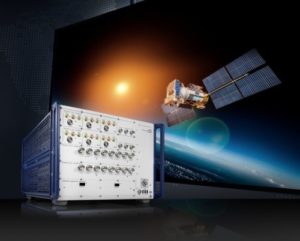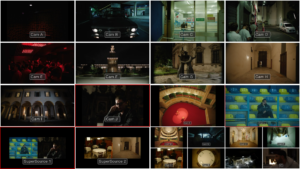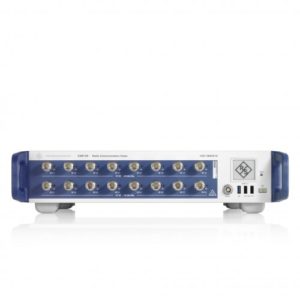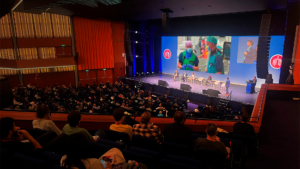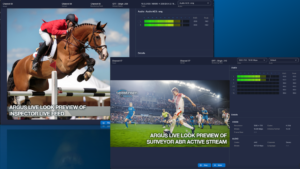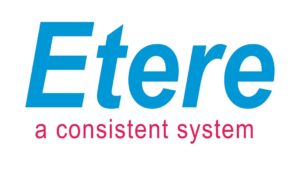Red Hat began by providing software to run on Linux about 30 years ago. As the largest open-source company in the world, we believe using an open source development model helps create more stable, secure, and innovative technologies. Our portfolio is broader, including hybrid cloud infrastructure, middleware, agile integration, cloud-native development, and management and automation solutions for service providers.
The industry is evolving, and that means new opportunities like expanding use cases that create new revenue streams. Emerging technology solutions offer advantages like building more agile networks, improving customer experiences, and finding innovative ways to deploy content. Here’s the hard part, in a fiercely competitive market, where non-traditional players are taking market share: how do you transition to a cloud-native strategy and forward-looking edge computing model supported by automated, software-defined networking? That is not a simple undertaking; it requires innovation and transformation at a pace that works for the entire enterprise.
Red Hat has worked with CableLabs to implement the CableLabs 10G Lab, facilitating the service provider’s relentless “innovation journey” and conquering technical and logistical challenges while leading the industry forward. Additionally, it embraces open and co-compatible configurations to provide a successful proof of concept (POC) and vendor collaboration.
Participants have the ability to deploy instances of 5G, DOCSIS, and other applications at the edge, with vendors configuring their cloud-native 5G network stacks into a multi-tenant, converged, private cloud setting. These initial steps serve as both the catalyst — and the realization — towards the end goal of enabling any workload to be co-located on an infrastructure serving the application in the optimal way. In addition, 5G and hybrid fiber-coax (HFC) are co-located and running as containers on shared infrastructure managed by a common management layer, resulting in benefits including:
Reducing operating expenses, including power consumption and capital expenses
Eliminating over-provisioned environments, matching resources to demand and scaling to optimize the network
Automating service deployment, faster provisioning, and reducing errors
Creating dynamic, customized network topologies, multiple geographies, reducing latency
Contributing is the deployment of Red Hat OpenShift, the industry’s leading enterprise Kubernetes platform, which allows a high degree of flexibility and functionality without the underlying limitations associated with vendor lock-in. Decoupling the network software from proprietary hardware increases the cadence of system upgrades, reducing the time to market for new capabilities and optimizations.

Source: CableLabs: Driving 5G and HFC Convergence with Multi-Tenancy at the Edge May 5, 2022 https://www.cablelabs.com/blog/multi-tenancy-at-the-edge
The 10G Lab is intended to align with the following goals:
Provide a foundation for convergence-related activities, including executing use cases
Provide an environment for hosting the 5G challenge and other interoperability events
Leverage the POC demonstrations as part of CableLabs’ innovation initiatives
Other goals include using learnings to enhance security, optimizing network configurations, balancing resource allocations, enabling performance settings, and easing the management of multiple applications on shared infrastructure. Looking ahead, CableLabs plans to expand the capabilities of the 10G Lab with open source 5G cores and vRAN solutions, as well as a virtual converged cable access platform (vCCAP).
The management of separate wireline/wireless access networks with overlapping capabilities are inefficient and costly, and limits the types of services that operators will be able to provide in the future. The desire to deploy systems into shared infrastructure has been answered within the CableLabs 10G Lab.
For a successful “innovation journey,” Red Hat’s partner ecosystem is an integral part of how Red Hat develops and delivers business and technical value to customers. Our extensive ecosystem of certified partners offers solutions for data over cable service interface specifications (DOCSIS) and cable modem termination system (CMTS) providing choice, flexibility, and agility. The community can help solve customer challenges, build integrated solutions, and establish/grow relationships all built around Red Hat's world-leading enterprise open-source solutions. Red Hat works together with industry groups like CableLabs and The Society of Cable Telecommunications Engineers (SCTE) to push the boundaries of technology in cable and media. Ongoing contributions in upstream open-source communities, including Kubernetes, OpenStack, and Fedora, and the experience of working with hardware acceleration partners positions Red Hat to identify how open source solutions can be applied to industry challenges, laying the foundation for further innovation.
We invite you to learn more about the CableLabs 10G Lab and multi-tenancy at the edge, in the recently published whitepaper, “Best Practices for Deploying 5G into a Shared Environment”.
Learn more about its telecom/media/entertainment (TME) solutions, OpenShift and Red Hat OpenShift Container Platform.
